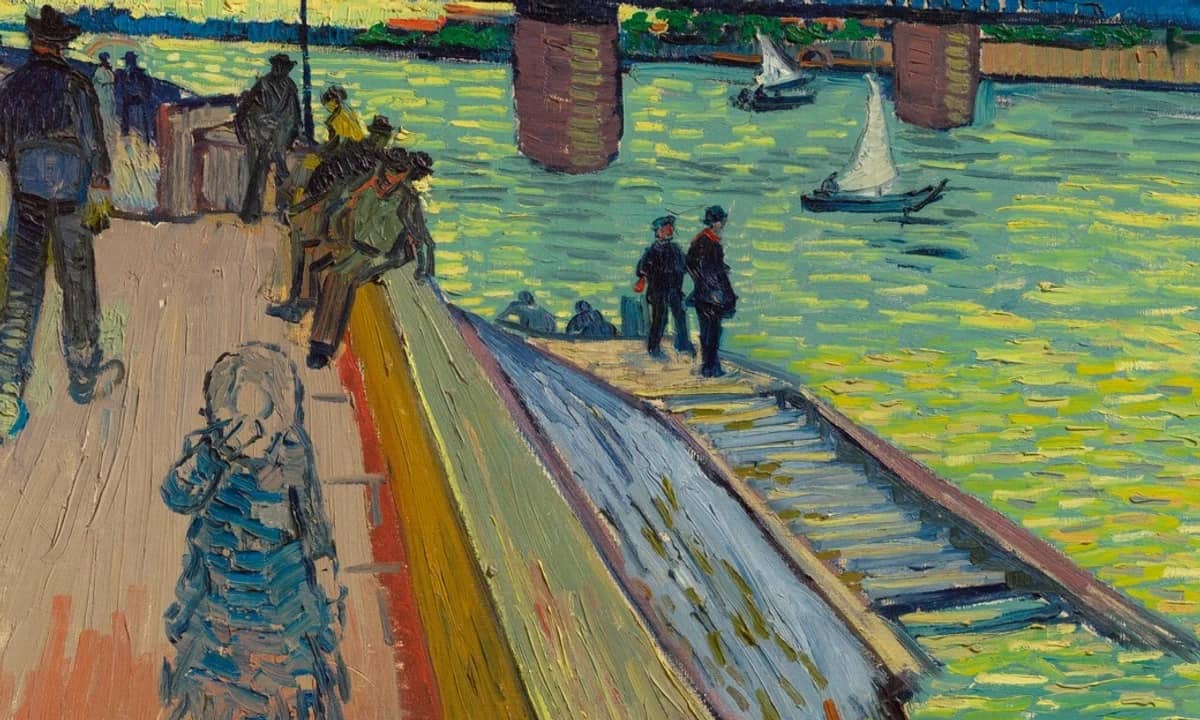The Trinquetoille Bridge, 1888 by Vincent van Gogh

Van Gogh's early delight with Arles began to tarnish when he realized that the local community were not ecstatic at having a difficult Dutch artist living in their midst. He made few friends, with the exception of Roulin the postman, Lieutenant Milliet and Madame Ginoux. In the middle of June, however, he did meet two artists, Eugene Boch and Dodge McKnight, who were staging in the area and with whom he became friendly. He was not, however, short of inspiration and both the surrounding landscape and the town itself offered a seemingly inexhaustible supply of subjects to paint. His style had evolved from the Paris days, and he was moving away from the influence of the Impressionists like Claude Monet, and Paul Cezanne.
In The Trinquetoille Bridge, Van Gogh has created a striking divergence in the picture plane between the strong vertical seen through the figures hurrying alongside the river, to the horizontally painted water. This in itself creates ambiguity between the direction the actual flow of the water should be taking, and that implied by his strongly horizontal short brushstrokes. The vivid colouring adds to the surreal and strange effect this painting produces.




















